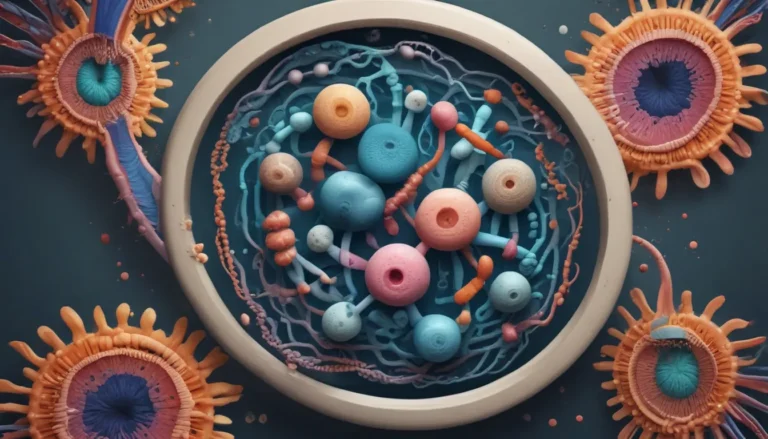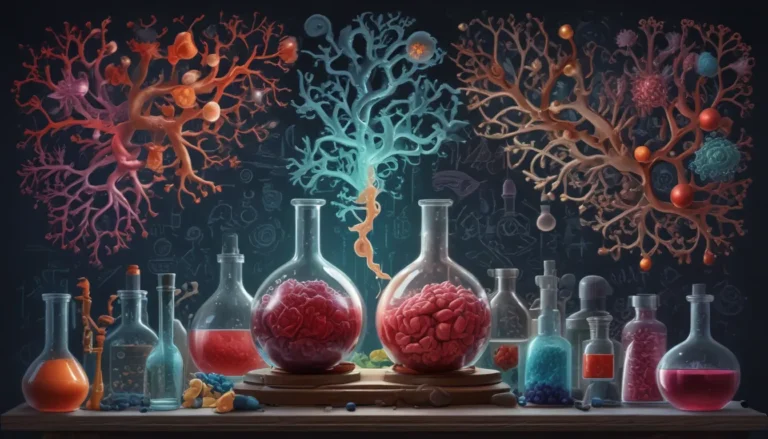A Note About Images: The images used in our articles are for illustration purposes only and may not exactly match the content. They are meant to engage readers, but the text should be relied upon for accurate information.
The human digestive system is a marvel of complexity and efficiency, silently working to keep our bodies nourished and healthy. From the moment we take our first bite to the final expulsion of waste, the intricate processes of digestion unfold with precision and grace. Despite its critical role in our well-being, there are many mysterious aspects of the digestive system that deserve our attention and wonder.
In this enlightening article, we will delve into eight intriguing facts about the human digestive system that will pique your curiosity and deepen your understanding of this vital system. From the surprising length of the small intestine to the enigmatic function of the appendix, these facts will showcase the wonders of our digestive anatomy.
Unveiling the Intricacies of Digestion
The Digestive Journey Begins in the Mouth
Did you know that the process of digestion initiates in your mouth? It’s not just about chewing your food; the enzymes in saliva kickstart the breakdown of carbohydrates, setting the stage for proper digestion downstream. The simple act of chewing activates this essential step in the digestive process, highlighting the interconnectedness of our bodily systems.
The Stomach’s Acidic Environment
Our stomachs harbor a hostile environment with a pH level ranging between 1 and 3, creating an acidic stronghold that aids in food breakdown and enzyme activation. This acidic milieu is crucial for digestion, showcasing the remarkable adaptability of our bodies to withstand such extreme conditions without harm.
The Remarkable Length of the Small Intestine
The small intestine, contrary to its name, boasts an impressive length of around 20 feet in adults, providing a vast surface area for nutrient absorption. The intricate folds and villi lining the small intestine further enhance its absorptive capacity, facilitating the efficient uptake of essential nutrients into the bloodstream. This remarkable organ is truly a powerhouse of nutrient absorption in our digestive system.
Unraveling the Mysteries of Digestive Organs
The Multifunctional Liver
The liver is a versatile organ that performs a myriad of functions in our digestive system. Not only does it produce bile to aid in fat digestion, but it also plays a pivotal role in detoxification, nutrient storage, and glucose regulation. The liver’s multifaceted role underscores its importance in maintaining metabolic equilibrium and overall health.
The Enigmatic Appendix
Long considered a vestigial organ with no apparent function, recent research suggests that the appendix may serve as a reservoir for beneficial gut bacteria. This newfound role in bacterial reseeding after illness or infection sheds light on the appendix’s potential significance in maintaining gut health and immune function.
The Colon’s Microbial Community
The colon, or large intestine, harbors a diverse ecosystem of trillions of bacteria collectively known as the gut microbiota. These beneficial bacteria aid in fiber digestion, vitamin synthesis, and immune modulation, highlighting their indispensable role in digestive health. The delicate balance of gut bacteria in the colon is essential for optimal digestion and overall well-being.
Nurturing Digestive Health
The Ongoing Renewal of Stomach Lining
The stomach lining undergoes constant renewal, with cells replenishing approximately every three to four days. This rapid turnover ensures the integrity of the stomach wall and protects it from the corrosive effects of gastric acid, showcasing the remarkable regenerative capacity of the digestive system.
Peristalsis: The Wave of Digestion
Have you ever wondered how food moves through your digestive tract? Peristalsis, a coordinated wave-like muscle contraction, propels food along the gastrointestinal tract, ensuring efficient digestion and transportation from the esophagus to the rectum. This rhythmic movement is essential for the smooth passage of food through the digestive system.
Embracing Digestive Wisdom
The human digestive system is a wondrous symphony of organs and processes working in harmony to sustain our health and vitality. By unraveling the enigmatic facts of our digestive anatomy, we gain a deeper appreciation for the intricate mechanisms that drive nutrient absorption and waste elimination. Cultivating awareness of our digestive system can empower us to make informed choices that support optimal digestion and overall wellness.
Inquisitive Minds Seek Answers
FAQs: Nourishing Curiosity
- How long is the human digestive tract? The human digestive tract spans approximately 30 feet from the mouth to the anus.
- What is the purpose of digestion? Digestion aims to break down food into absorbable nutrients and eliminate waste from the body.
- Does the digestive system have its own nervous system? Yes, the enteric nervous system regulates digestion independently of the brain.
- Can emotions impact digestion? Yes, emotions like stress can disrupt digestive function, manifesting in symptoms like indigestion or diarrhea.
- How does the stomach protect itself from gastric acid? The stomach lining is shielded by a layer of mucus that buffers against the corrosive effects of gastric acid.
- What triggers heartburn? Heartburn typically arises from the reflux of stomach acid into the esophagus, causing a burning sensation in the chest.
- Do certain foods support digestion? Yes, fiber-rich fruits, probiotics, and ginger can aid digestion and foster a healthy gut environment.
- Can medical conditions affect the digestive system? Medical conditions like gastritis, ulcers, and irritable bowel syndrome can impact digestive health and function.
Embark on a Journey of Discovery
Venture deeper into the realm of digestive wonders by exploring detailed articles on specialized digestive organs like pyloric sphincters and transverse colons. Pyloric sphincters act as gatekeepers, regulating food passage from the stomach to the small intestine, while transverse colons play a pivotal role in water absorption and waste preparation for elimination. Expand your knowledge and feed your curiosity by delving into the intricate functions of these essential digestive components.
Nurturing Trust Through Knowledge
Our dedication to delivering reliable and engaging content underscores our commitment to providing a rich tapestry of insights and information. Each fact on our platform is crafted by real users, ensuring a diverse and credible collection of knowledge. Through meticulous editorial review, we uphold the highest standards of accuracy and authenticity, guaranteeing that the facts you encounter are not only captivating but also trustworthy. Dive into a world of discovery and learning with confidence, knowing that our commitment to quality and veracity guides your educational journey.
In conclusion, the human digestive system stands as a testament to nature’s ingenuity, orchestrating a symphony of processes that sustain our health and vitality. By unraveling the mysteries and complexities of our digestive anatomy, we can deepen our appreciation for the miraculous mechanisms at play within our bodies. Let this newfound knowledge inspire you to make mindful choices that nurture your digestive health and promote overall well-being. The next time you sit down to a meal, remember the extraordinary workings of your digestive system—it truly is a marvel to behold.






